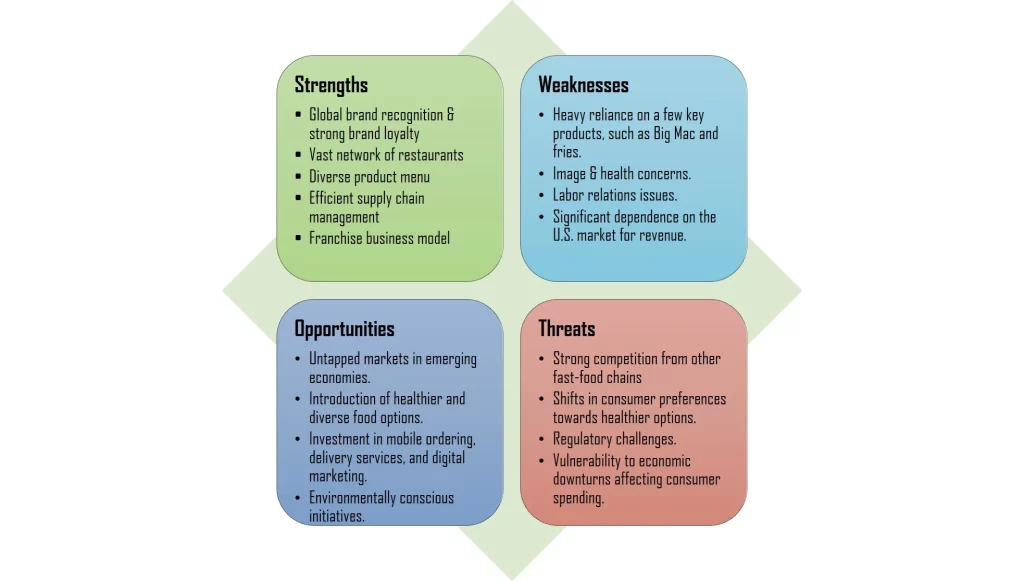Company Profile
SWOT Analysis
PESTLE Analysis
STEEPLE Analysis
Porter’s Five Forces
Competitor Analysis
Stakeholder Analysis
Industry Analysis
Market Analysis
Financial Analysis
Cost-benefit Analysis
Root Cause Analysis
Risk Analysis
Supply Chain Analysis
Business Process Analysis
Value Chain Analysis
Strategy Analysis & Development

Below is a sample SWOT analysis essay on McDonald’s Corporation. This example is intended to help students write better business analysis essays.
McDonald’s Corp. SWOT Analysis Essay
SWOT Analysis Essay Outline: McDonald’s Corporation
- Introduction:
- Strengths:
- Global Brand Recognition
- McDonald’s standing as one of the most recognized and valuable brands worldwide.
- Strong brand loyalty among consumers.
- Extensive Global Presence
- McDonald’s vast network of restaurants in over 100 countries.
- Adaptation of menus to cater to local tastes.
- Diverse Product Menu
- A broad menu offering various food and beverage options.
- Adaptation of menus to cater to local tastes.
- Efficient Supply Chain Management
- Streamlined supply chain for consistent and timely product delivery.
- Economies of scale in procurement and distribution.
- Franchise Business Model
- Success of the franchise model contributing to rapid expansion.
- Allows local adaptation and entrepreneurial opportunities.
- Global Brand Recognition
- Weaknesses:
- Dependence on Key Products
- Image and Health Concerns
- Labor Relations Issues
- Overreliance on U.S. Market
- Opportunities:
- Expansion in Emerging Markets
- Menu Innovation
- Digitalization and Technology
- Sustainability Initiatives
- Threats:
- Intense Competition
- Changing Consumer Preferences
- Regulatory Challenges
- Economic Downturns
- Analysis & Strategy Development:
- Conclusion:
This SWOT Analysis outline provides a comprehensive framework for assessing McDonald’s internal strengths and weaknesses, as well as external opportunities and threats in the fast food restaurants industry.
